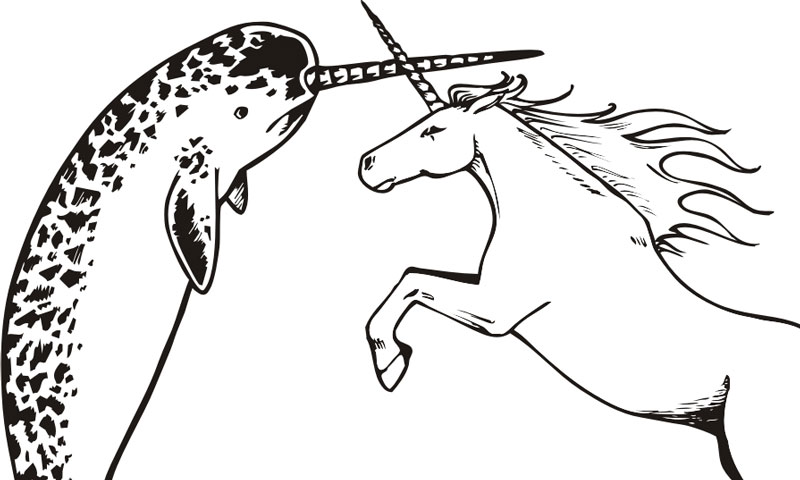
Credit: machroboraza via Flicker, CC BY-NC
J.K. Rowling's wizarding world is full of vivid and strange creatures unimaginable to most muggles: from the fiery phoenix with its healing tears to a shape-shifting kelpie who dwells in Loch Ness. New in theatres this month, Fantastic Beasts and Where to Find Them - the latest spinoff from Rowling's Harry Potter universe - is sure to inspire renewed interest in "magizoology." According to UAlberta paleontologist Gavin Bradley, '15 MSc, there are historical truths and scientific wonders behind many of Rowling's imaginary creatures.
Bradley - whose ginger hair, knitted jumper and lilting Irish accent would fit right in at Hogwarts - runs the Care of Magical Creatures class for UAlberta's one-day School of Witchcraft and Wizardry, where he uses museum specimens to turn magical thinking into zoological curiosity. The annual event held in partnership with Let's Talk Science gives young witches and wizards a chance to do hands-on science activities, from chemistry to botany to, of course, zoology.
Here, Bradley shares five real-life biological curios with a connection to a few of the whimsical onscreen creations.
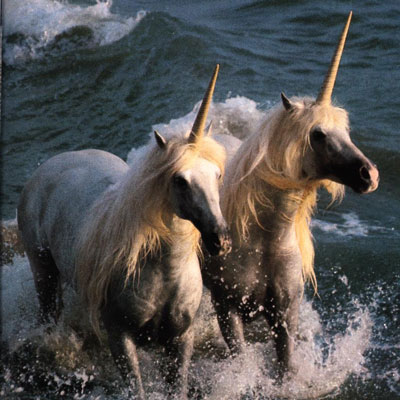
Credit: Amy Goodman via Flickr, CC BY-NC 2.0
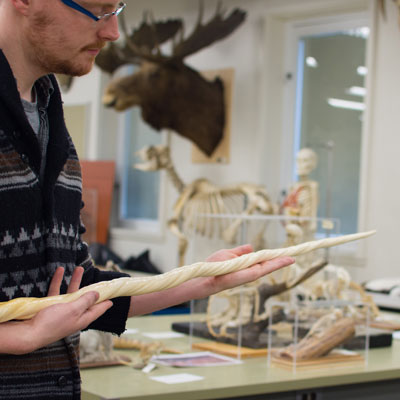
Credit: Amanda Kelley
1: Fantastic beast: Unicorn
Seen in: Harry Potter and the Philosopher's Stone
Real-life connection: Narwhal (Monodon monoceros)
Both in the Harry Potter stories and classical mythology, the unicorn is associated with purity. But medieval hustlers made serious coin selling counterfeit unicorn horns, many of which were the tusks of narwhal whales. While they look convincing, the narwhal's tusk isn't a horn at all; it's actually an ever-growing canine tooth. Other animals have pairs of constantly growing teeth - many rodents, for example - but the narwhal is the only one that has a single elongated tooth. Too fragile to break up ice or be useful in a joust, the purpose of the tooth is a bit of a mystery. Dentists have suggested that it acts as a temperature-sensitive divining rod that helps narwhals navigate ocean currents.
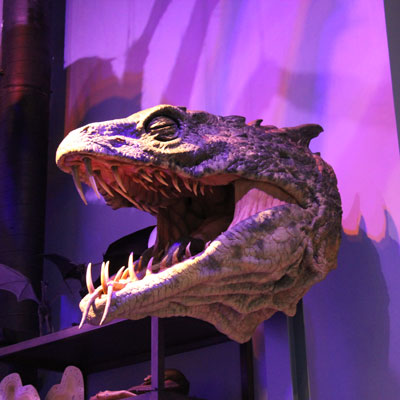
Credit: Rev Stan via Flickr, CC BY 2.0
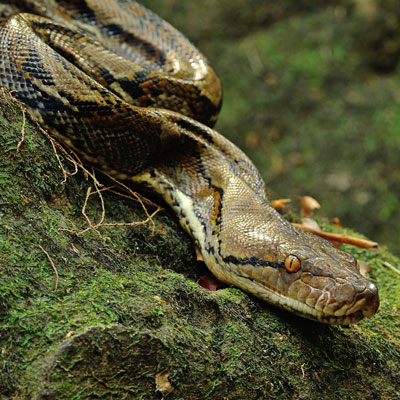
Credit: tontantravel via Flickr, CC BY-SA 2.0
2: Fantastic beast: Basilisk
Seen in: Harry Potter and the Chamber of Secrets
Real-life connection: Python (Python reticulatus)
The basilisk, a giant venomous serpent from the fictional Chamber of Secrets, displays traits of multiple real-life snakes - amplified for maximum terror, obviously. "When you're coming up with mythology, it pays to go bigger," explains Bradley. The world's longest snake, the reticulated python, is closer in size to villain Voldemort's pet Nagini than the basilisk. And as a large species that can wrestle and subdue prey, the reticulated python doesn't need venom to be terrifying. New research suggests that the python's death grip doesn't simply suffocate - it increases the blood pressure to the brain and eyes of its prey, causing the same "red-out effect" that reddens the field of vision of zero gravity fighter pilots. (Gulp.)
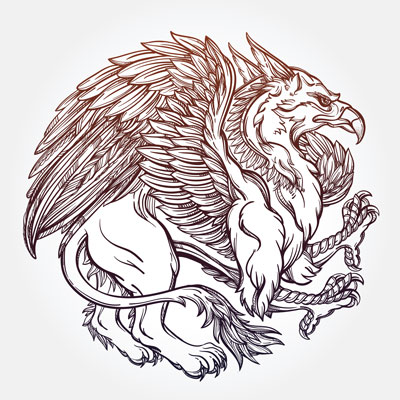
Credit: iStock
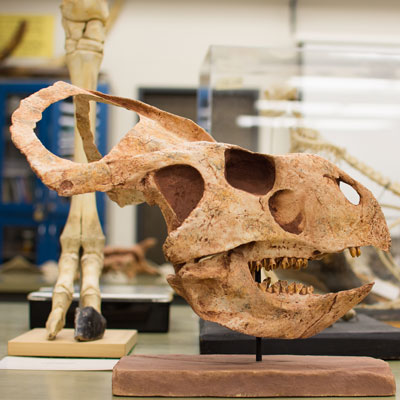
Credit: Amanda Kelley
3: Fantastic beasts: Griffins and Hippogriffs
Seen in: Harry Potter and the Prisoner of Azkaban
Real-life connection: Protoceratops
What do you get when you pair the head of an eagle with the body of a lion? No, it's not the beginning of a joke. Ask a paleontologist, and the answer is Protoceratops, a smaller cousin of Triceratops that lacks the three facial horns. In 7th century BC, when Scythian nomads looked into the shifting sands of the Gobi Desert and saw eroding fossil skeletons, they didn't know what a dinosaur was. Instead, they compared the forms they saw to what they were already familiar with. "They'd never seen an animal other than a bird that had a beak," Bradley explains. So the large, four-legged creatures with hooked beaks became the mythical cut-and-paste monsters we know as griffins. In both classical mythology and Rowling's magical realm, there is further hybridization: hippogriffs, which are the offspring of griffins and horses.
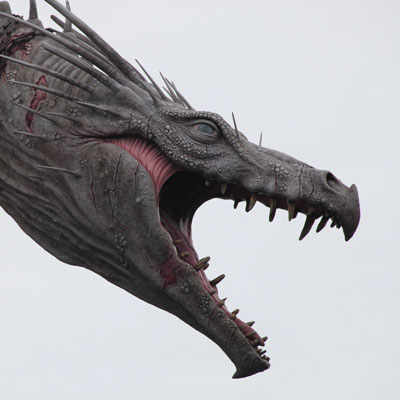
Credit: Sam Howzit via Flickr, CC BY 2.0
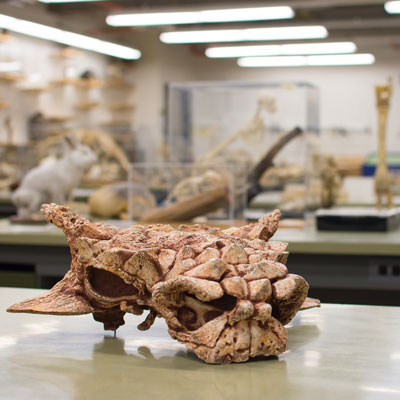
Credit: Amanda Kelley
4: Fantastic beast: Dragon
Seen in: Harry Potter and the Goblet of Fire
Real-life connection: Dinosaurs
Dinosaurs bear a striking resemblance to dragons. But whether or not dinosaur fossils spawned dragon myths is up for debate. Certainly in China, beautifully preserved fossils were thought to be dragon remains. Even today, dinosaur bones are used in black market Chinese medicine to treat joint pain and erectile dysfunction (sound like a potion from Knockturn Alley, anyone?). The dragon-like feature that Bradley shows his young wizarding students is the heavily armoured skin of Minotaurasaurus. "You've got armour formed from dermal bones - bones that form directly from the skin." This armour covered the length of the dinosaur's body and was an adaptation to repel tyrannosaur bites.
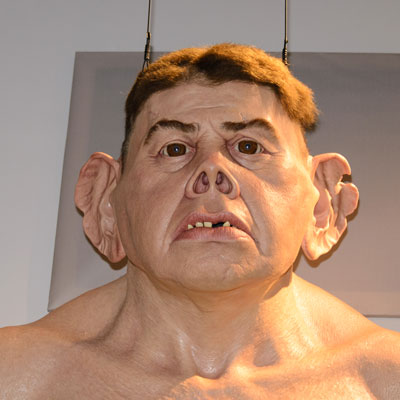
Credit: Iain Middleton-Duff via Flickr, CC BY-ND 2.0
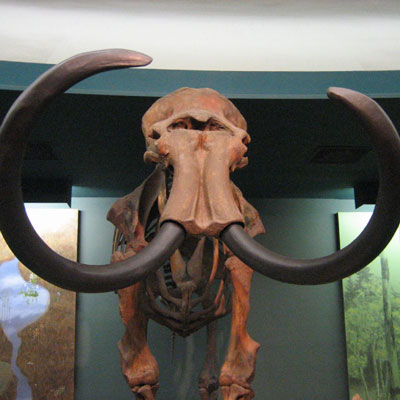
Credit: Joe Goldberg via Flickr, CC BY-SA 2.0
5: Fantastic beast: Giant
Seen in: Harry Potter and the Order of the Phoenix
Real-life connection: Woolly mammoth (Mammuthus primigenius)
Rowling certainly isn't the first to imagine a larger than life human like Grawp, Hagrid's destructive half-brother. In fact, the idea of giants has been around a very long time and may have been helped along by the remains of real creatures. Ancient Greeks uncovered bones of massive Pleistocene mammoths and incorporated the evidence into their mythology. The skulls of mammoths and elephants are puzzling even today. The huge cavity in the centre of the face - which is actually an expanded nasal cavity for a robust trunk - looks more like the gaping eye socket of a colossal cyclops. Combine this with fang-like tusks, and it's easy to imagine a monstrous man-eating giant.
Amanda Kelley is a wildlife biologist, photographer and freelance writer. She likes to think that her "patronus" would be a red squirrel.
Gavin Bradley has a master's degree in Evolution and Systematics from the University of Alberta, where he studied the social lives of tyrannosaurs, and of course, their fearsome teeth. He also has a BA in Archaeology, and a non-academic interest in the world of Harry Potter.
 More from Thought Box
More from Thought Box
We at New Trail welcome your comments. Robust debate and criticism are encouraged, provided it is respectful. We reserve the right to reject comments, images or links that attack ethnicity, nationality, religion, gender or sexual orientation; that include offensive language, threats, spam; are fraudulent or defamatory; infringe on copyright or trademarks; and that just generally aren’t very nice. Discussion is monitored and violation of these guidelines will result in comments being disabled.